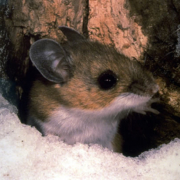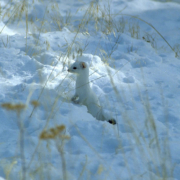Bringing Nature to the Human Workplace
The board of the Wildlife Habitat Council (WHC) recently met at the 79th North American Wildlife and Natural Resources Conference in Denver that brought together nearly 900 conservation professionals from state and federal agencies and non-profit organizations from across North America.
By embedding our board meeting in the conference, we were able to build new bridges to the agencies and non-profit conservation partners we’ve been working with for many years. By participating in meetings and discussions at the conference, our message and unique approach to delivering conservation within the corporate world was heard.
One of the focus areas of the conference was what the organizers termed the “human dimension”–the people who benefit from, are impacted by, and are potential supporters for natural resources conservation. While wildlife recreation is on the rise in the form of increased numbers of birdwatchers and wildlife photographers, sportsman numbers are in decline for a number of reasons, including a diminished interest in nature in the younger generation. A census of sportsmen found a 46% decline in waterfowl hunters since 1966 while a 2013 study by Kids Canada found that 70% of 13-20 year olds spend an hour or less per day outdoors. These trends are of concern to the conservation community for many reasons, especially when it comes to garnering support for their continued work.
To address these trends, the community of conservationists represented at the conference held panel discussions and plenary sessions about our changing world and their hopes to engage new populations and new generations in conservation, whether as hunters or fishermen or as hikers or birdwatchers.
One of the causes of the decline in numbers seen by the conservation community is increasing urbanization that leads to a growing physical and psychological distance between people and nature. As the distance grows, nature becomes different and separate from humanity. It becomes a destination to visit, requiring plans, driving directions, maps and possibly entry fees and licenses.
A great way to reduce this distance is to bring nature to people by giving people the opportunities to engage with nature at their workplace. Considering that the adult workforce spends more of their waking hours at their place of employment than in active or passive recreation activities, workplace nature programs present a simple and efficient way to bridge the nature gap and address the separation.
Workplace based conservation programs are at the core of what we do at WHC. With more than 800 conservation programs that connect people and nature at their place of work, WHC has identified the following factors that make good, successful nature programs at workplaces across the world:
- Support at all levels: Employee-lead conservation projects can happen without support from management but these projects only truly thrive when leadership at the facility and at corporate HQ offer encouragement and recognition for the idea of habitat projects on their lands and also work to direct organizational resources and energies in support.
- Employees should follow their conservation passions: When a conservation project aligns with the interests and passions of the team charged with implementation and monitoring, success will be automatic. But the converse is also true; if a wildlife team is interested in a specific conservation objective like building native bee habitat but management or conservation partners direct the efforts elsewhere, excitement around the project will wane, connections to it will weaken, and ownership of it will vanish.
- Recognize early success: When a new wildlife team is formed and ready to start a project, it is important that the team sees success early. This will be a challenge if a complex project requiring delayed gratification is chosen for implementation–restoring a wetland can take decades, removing invasives can be a never-ending task, and creating habitat for rare and declining species depends on many external influences that are beyond the reach of the team charged with implementation. Planting a wildflower meadow brings colors and birds in the spring, a pollinator garden provides rewards by attracting butterflies and bees during the season and tree plantings can provide employees with instant gratification that grows along with the tree.
Other factors that build success and engage employees as environmental stewards include adding an element of competition (think photo contests and wellness challenges); paying attention to physical placement and aesthetics; providing interpretive materials in the form of signs of trail brochures; and creating well-organized events around the project that broaden involvement beyond the core team.
By engaging working adults in meaningful conservation activities where they spend much of their waking hours, we start to bridge the nature gap, halt the decline, and truly bring a human dimension back to nature.








